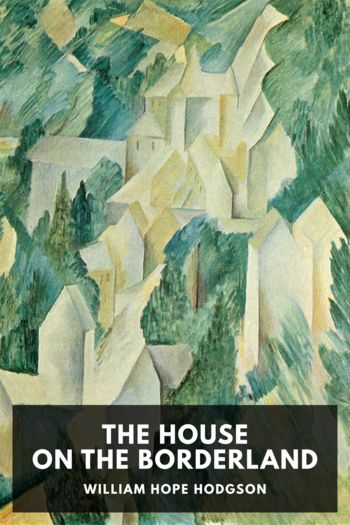Gluck by Diana Souhami (most interesting books to read .TXT) 📗

- Author: Diana Souhami
Book online «Gluck by Diana Souhami (most interesting books to read .TXT) 📗». Author Diana Souhami
Though Gluck got no further with her book than a two-page synopsis, she generated a library of correspondence with the colourmen, The British Standards Institution, the Arts Council of Great Britain, the British Colour Manufacturers Association, the British Museum, the Courtauld Institute, the Imperial Arts League, the International Institute for the Conservation of Museums, the Ministry of Education, the Ministry of Works, the Museums Association, the National Gallery, the Oil and Colour Chemists’ Association, the Royal Academy of Arts, the Royal College of Art, the Royal Institute of British Architects, the Royal Institute of Oilpainters, the Royal Institute of Painters in Watercolours, the Royal Scottish Academy, the Royal Society of British Artists, the Slade School of Fine Art, and the Society of Women Artists. She lectured and published articles including ‘The Impermanence of Paintings in Relation to Artists’ Materials’, ‘The Dilemma of the Painter and Conservator in the Synthetic Age’ and ‘On the Quality of Paint’. For a decade she spent a third of her annual income on the whole campaign. She broadcast, appeared on television, wrote to the papers, artists, politicians, directors of galleries, the Queen and almost everyone else as well. Nesta took up the cause in Honolulu:
Sir Colin Anderson came through here the other day, who is another director of the Tate Gallery [sic]. I asked him whether he knew you and he immediately said ‘Oh – that woman who is making everyone’s life hell over trying to get a paint standard?’ I said, ‘But don’t you think there should be a paint standard?’ ‘Undoubtedly,’ he said. ‘Then don’t you agree that she is doing a remarkably fine job, giving up her own work to get this through?’ He said, ‘Oh yes, I admit it’s necessary, but I don’t see why she should set everybody by the ears in the process.’ I said, ‘As far as I can remember that is exactly what Christ did, and it’s apparently the only way as long as mankind remains in the lethargy it’s in now.’
It was at the Queen of the Islands cocktail party and he moved away. Why do they have such people as trustees and who is he? At any rate you have become a household word in art circles I gather since this fight! 6
Gluck mustered support worldwide. In Calcutta, Dr Bhandari, the chief chemist at Shalimar Paints Limited, supplied her with Ivory Black made from Indian ivory flakes, rather than from charred bone used in the machine-made equivalent, mixed with cold-pressed linseed oil from the villages of Madhya Pradesh near his home town. He had already supplied Indian Yellow, for restoration work in Italy, made from the urine of an elephant fed on mango leaves and water.
In Steyning, though dinner guests, relatives and those with no interest in the technicalities of the matter got glazed with disbelief and boredom at her unceasing preoccupation with the subject and her ‘monopologues’ as her nephews and niece termed her dinner-table discourses, friends helped all they could. Dr Andrew Thomson, an academic chemist, took great interest in her work, undertook experiments on her behalf into the relative viscosity of hotand cold-pressed oil and advised her on her own researches. Raul Casares, who was married to a second cousin of Edith’s, photographed her experiential proof of the ‘suede effect’. Edith told Gluck she was mad and that everyone was painting more than ever.’ “What do you think you are going to get out of this?” she asked and I said, “Paints”.’ Which was what, after a decade or so, she got.
At her instigation, the colourmen, Winsor & Newton and Rowneys, stepped up their researches into the use of coarse or finely ground pigments in the manufacture of artists’ oil paints, the stability of drying rates between different paints, the relative effect on paint quality of mixing pigments with cold- or hotpressed linseed oil. Methods of priming canvases, the quality and country of origin of flax used in their making, the composition of glue size, the length of time primer was left to mature, and treated canvases were given to dry – all were scrutinized, researched and reassessed by the colourmen in an effort to satisfy Gluck. ‘When (and if!) we make you into a customer thoroughly satisfied with our efforts, we’ll celebrate with champagne. Here’s to then!’ Victor Harley, Director of Winsor & Newton wrote to her (26 November 1951).
A decade or so later, after no champagne and an unrelenting correspondence that hovered, on his side, between fascination, patience and total exasperation, he won her approbation by marketing cold-pressed linseed oil. ‘When the Queen Mother was Queen,’ Gluck, who was, after all, her mother’s daughter, wrote to tell him (27 September 1965),
Her Majesty was interested in the efforts I was making with regard to artists’ materials and asked to be kept informed of my progress. I thought you might like to know that in my recent letter to Her Majesty I reported that your Firm was now marketing the cold-pressed linseed oil produced by Messrs Wilson & Sons of Dundee and that you were selling this in this country and the United States. I also mentioned that this was unique in the World today as though all the text books recommend cold-pressed linseed oil there was none until you put it on the





Comments (0)